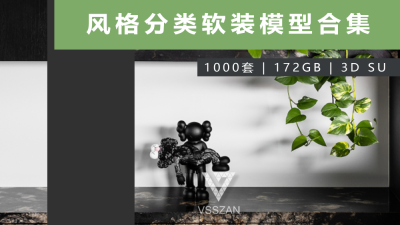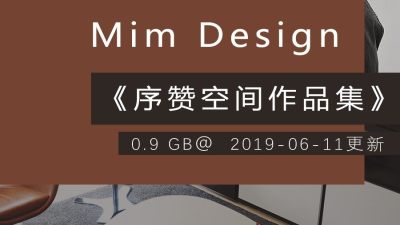
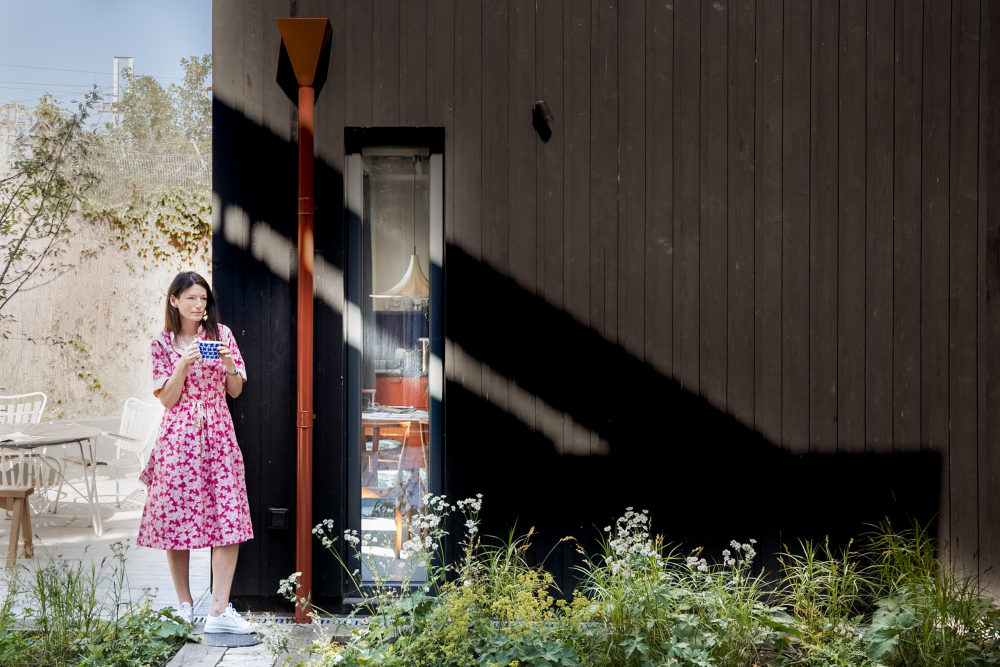
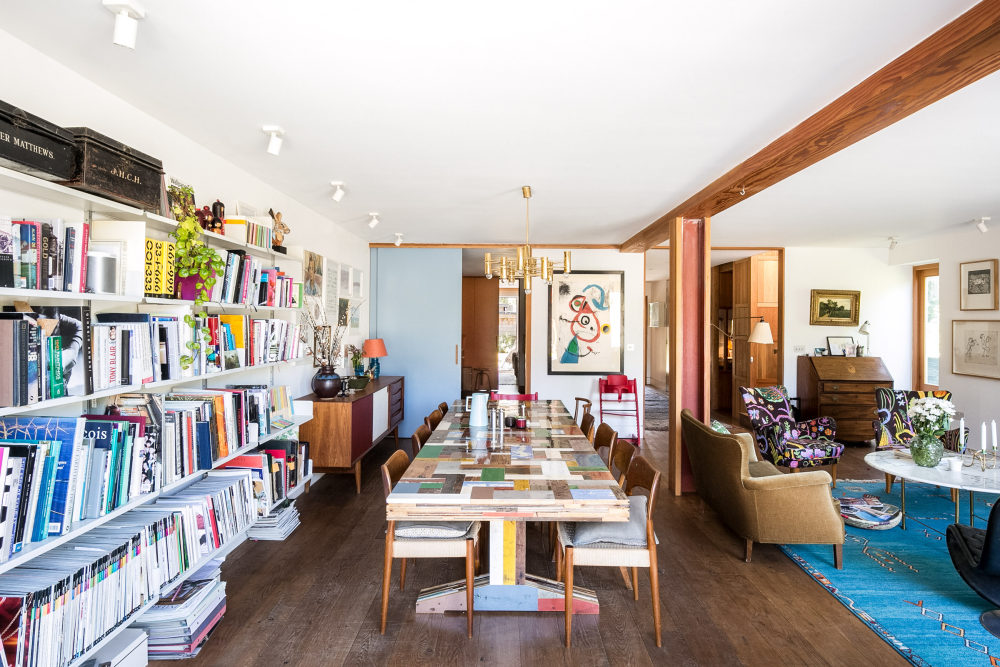
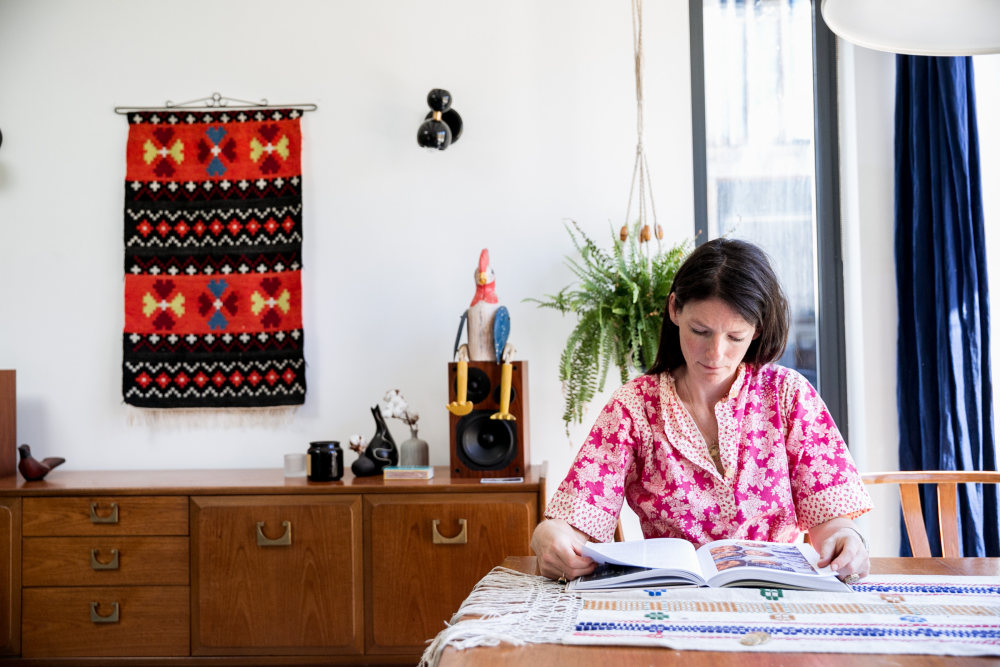
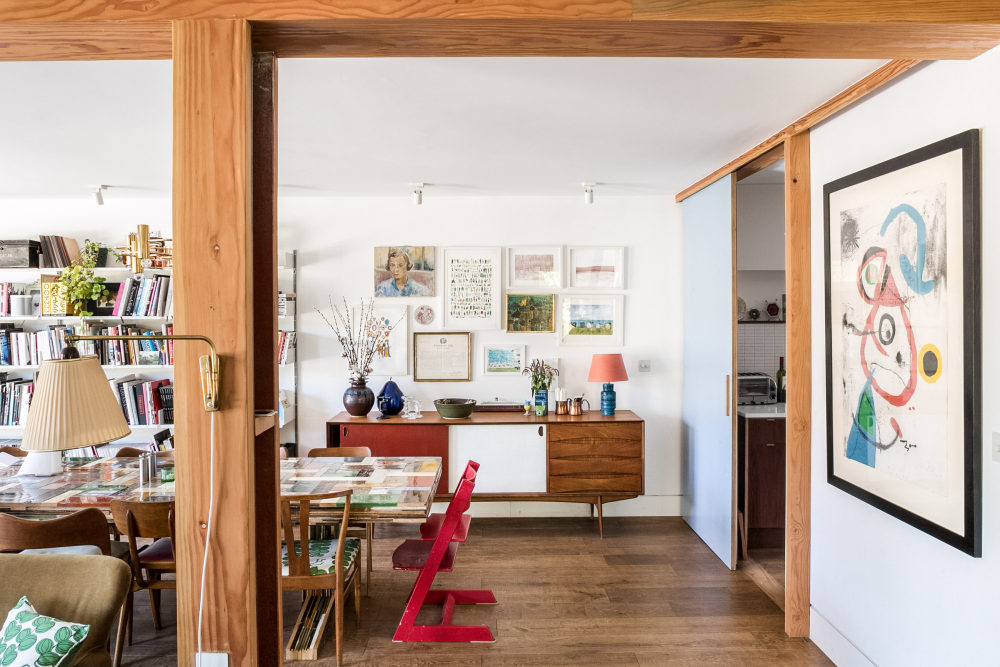
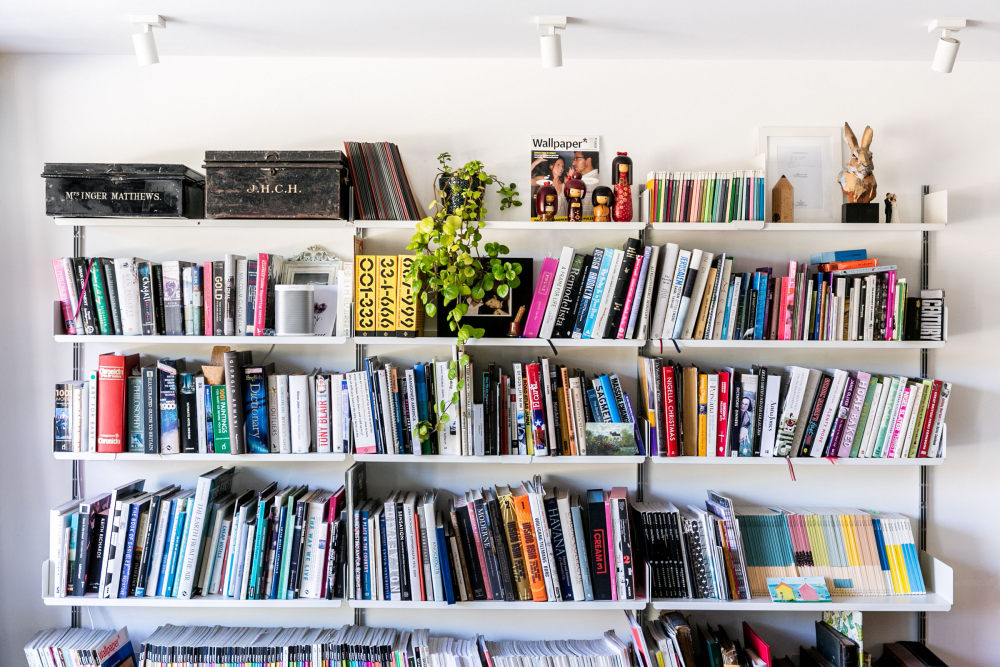
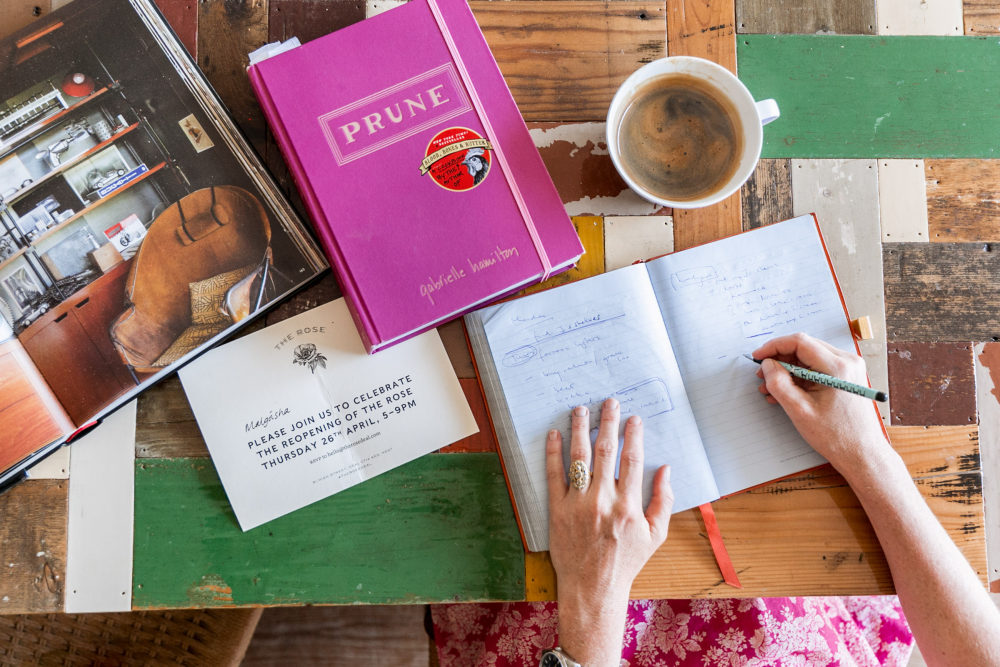
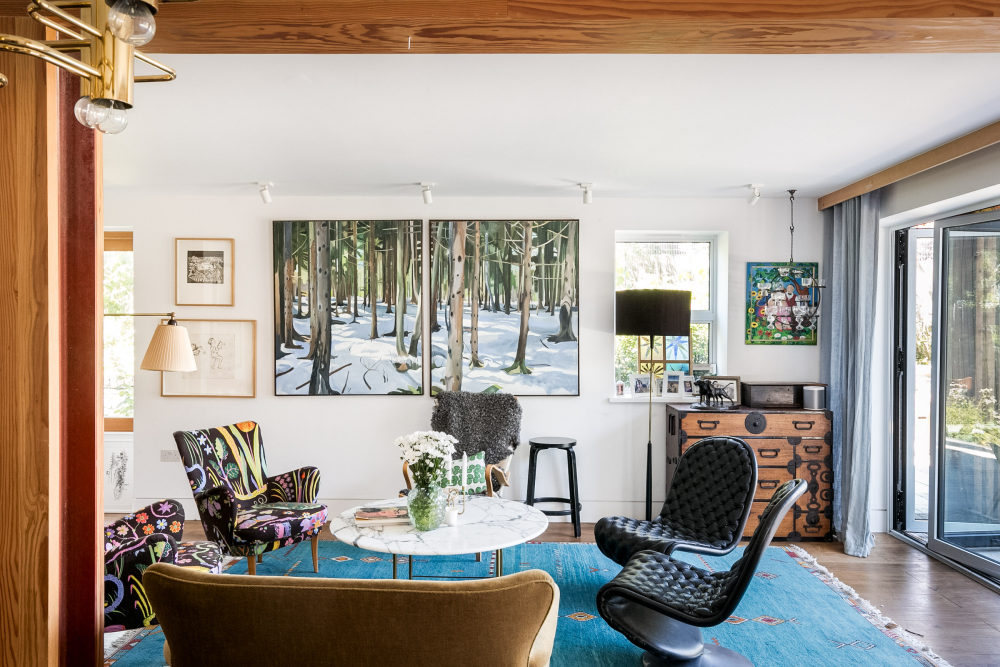
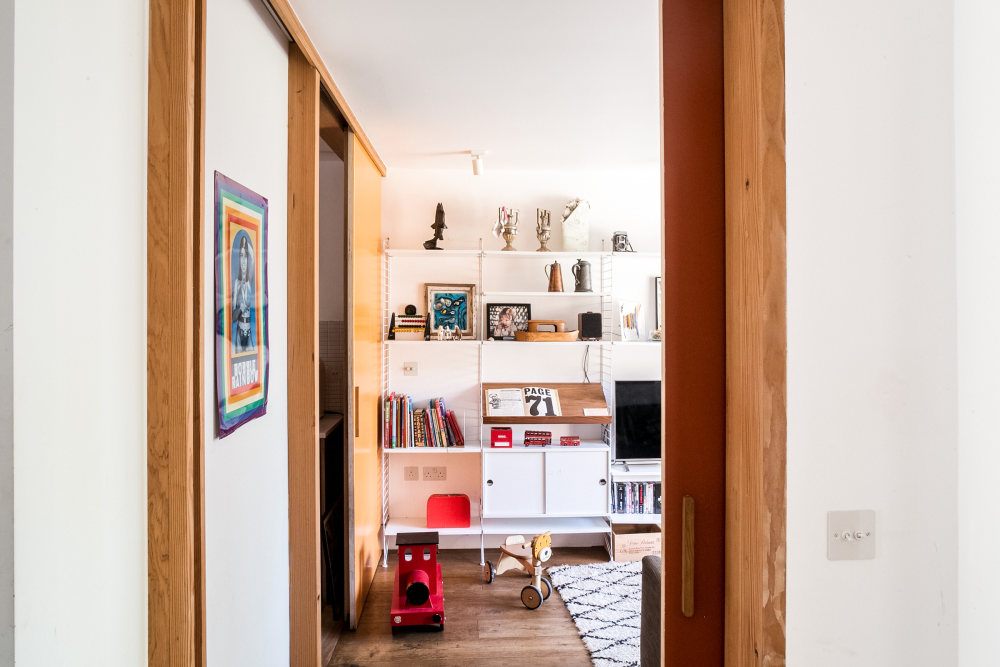
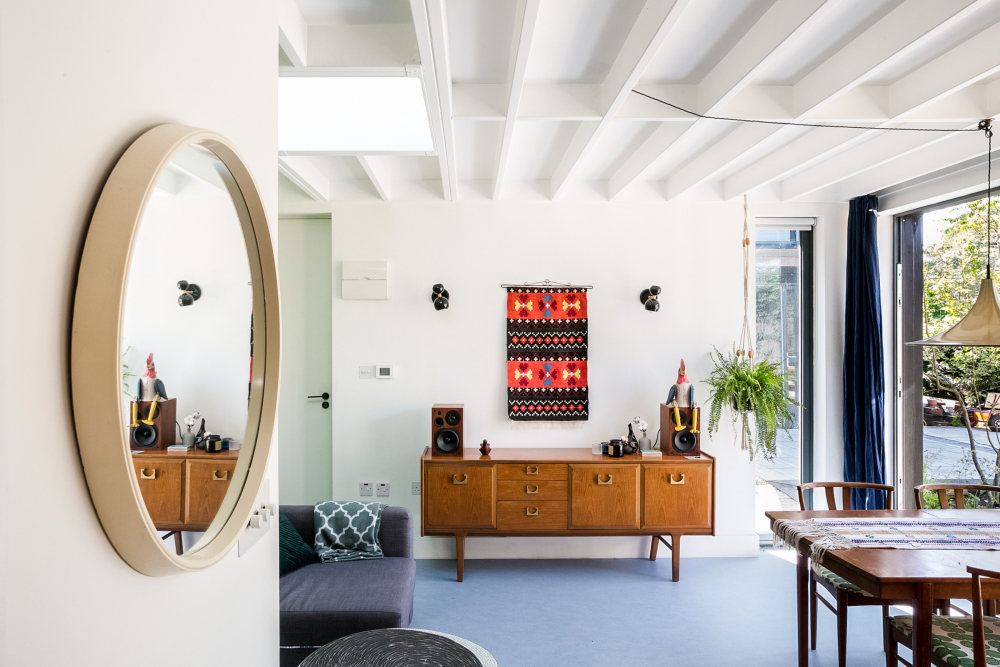
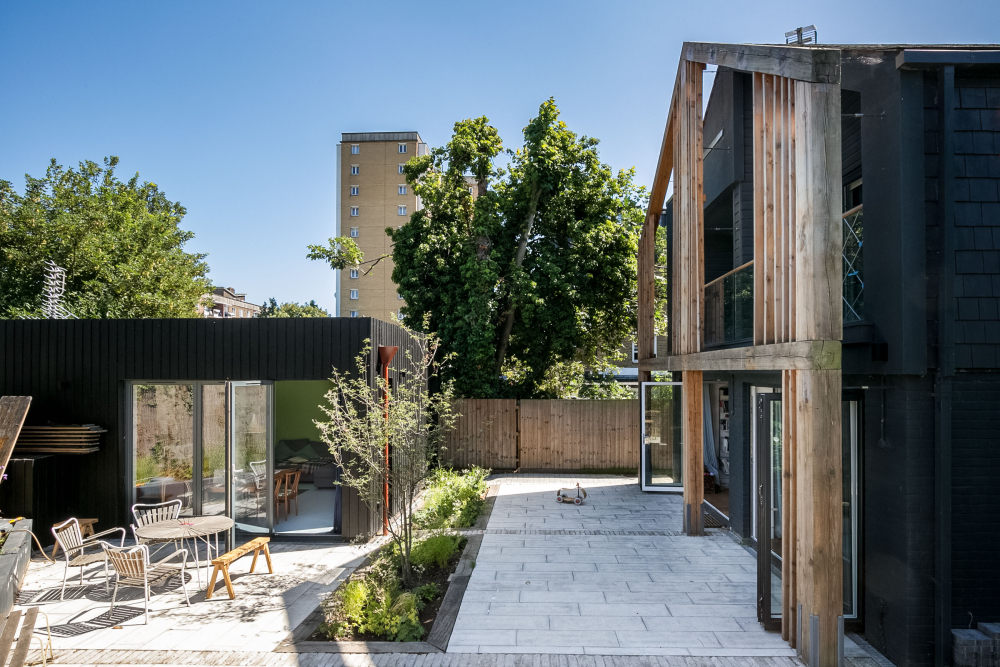
We moved a lot before we got here, and not just in this area. My first small Victorian house was in Shepherd’s Bush, then we renovated and sold two Georgian townhouses in Primrose Hill. I’ve thought a lot about period homes versus new builds since moving to a modern house here in Hackney.
“Period homes are beautiful and really fun to do up. But they can be hard to live in, especially with small children, because they normally have lots of stairs and narrow floorplans.
“What finally got me was how prescriptive it was to have the kitchen in the basement, with the living space upstairs; you’re constantly running up between the two.
“So for our next move, I was determined to get a house with a wider footprint. It came down to a double-fronted Victorian house and this place, so it wasn’t a quest for modern architecture necessarily, it was more a search for a particular kind of living space.
“This house was brand new, but it didn’t look like this when we bought it. It wasn’t built with much love: it was full of corridors, the ceilings were low, there were lots of bedrooms and not much living space, and there was carpet everywhere.
“Before buying it we had come very close to purchasing The Framehouse via The Modern House. We had fallen in love with the space, but ultimately didn’t end up buying it.
“Before we made an offer on this place we befriended Marcus Lee, the architect of The Framehouse, and bought him here for a look around to see if we could replicate some of the elements here. He came in not as an architect but as a sort of advisor, suggesting things like the black paint for the exterior and using the Douglas Fir.
“Unlike with our previous projects, here we had a very specific brief for how we wanted to live in and use the space. It’s funny because when you’re doing up period homes you have to go with what the house will allow. But when we gutted this space, it was a complete blank canvas, almost asking us, ‘How do you want to live?’
“It required us to think about what we do, to the point of saying, ‘well, our day starts with children’s boots, toys and stuff, so where do we put all that?’. I’m Swedish, and I love that in Swedish homes you have a big porch or cupboard where you put your coats, bags and shoes as you enter the house, so we incorporated that here.
“I always had those big kitchen islands before, which were great and work in traditional homes. But they tend to dominate and I’m quite messy, so I liked the idea of having a separate kitchen you can throw everything into after dinner and then close off.
“People put so much emphasis on open-plan everything but, actually, utility rooms, cupboards and spaces you can shut off are really functional and nice to have; people have forgotten that.
“We’ve used sliding doors everywhere because we wanted the option to open and partition off areas when we need to. Watching television in a massive open-plan space is not great; I feel like I’m always looking over my shoulder! Having a small, cosy space full of books makes watching a film way more enjoyable.
“Because there is so much land in Sweden, people build lots of outhouses around their country homes. In London, there isn’t the same amount of space, but I liked the idea of replicating a cabin in some way, so we built a little guesthouse in the garden.
“We rent it out via Airbnb, which is so easy and flexible. I’m not territorial at all about people staying in my house, and it helps that it has its own access. It also doubles as a spare room, so it’s great when we have family staying.
“People have asked me a lot about moving from Primrose Hill to Hackney. There’s a big difference in terms of people’s mindset. Primrose Hill is lovely but it’s not going anywhere; it’s very established to the point of being stagnant.
“There is constant change here and people are out and about, trying new things, talking and engaging, which I love. There’s stuff going on all the time and theres an energy thats different from north-west London.
“My husband, Chris, and I have just opened a B&B in Deal, Sussex, so we’re there a lot during the week. I love that when we come back here we don’t have to leave, not just because it’s big enough but also because people tend to pop round. It’s great that we know a lot of the neighbours and that the children are best friends with the kids on the street.
“Our lives have changed a lot moving here, and not just because of where we are. Coming from a traditional house with five floors, it’s been lovely to have a house with just two floors because it feels like we’re closer as a family.
“I wonder, though, if when the children get older and more teenage it will work as well. There were lots of nook and crannies in the old house, which allowed you to be by yourself a bit more.
“Sharing a bathroom with the children seems fine now, but as they get older we will have to evolve. I guess that’s the deal with a family house, you kind of just make it work for you as you go along.”
Alex, how do you define modern living?
“When a space suits you and how you live and work. When your home frames your life, rather than hinders you.”
What would be the first thing you would take with you if you moved?
“When we moved here I decided to buy the big Piet Hein Eek dining table. We play our lives out around that table, so I would I take it if I could, but it took six men to carry in!”
Is there a home on The Modern House website that has caught your eye?
I love the elegant juxtaposition between traditional and modern at Crowan. And that swimming pond at the bottom of the garden is my dream.
For a nose around a well-designed home every fortnight, subscribe to our newsletter
Read more: Break New Ground: the best new homes for sale in the UK
My Modern House: artists Langlands & Bell talk life, art and architecture at their self-designed country retreat
- 转载自:The Modern House
- 语言:English
- 阅读原文
|

 发表于 2020-8-4 05:04:34
发表于 2020-8-4 05:04:34














